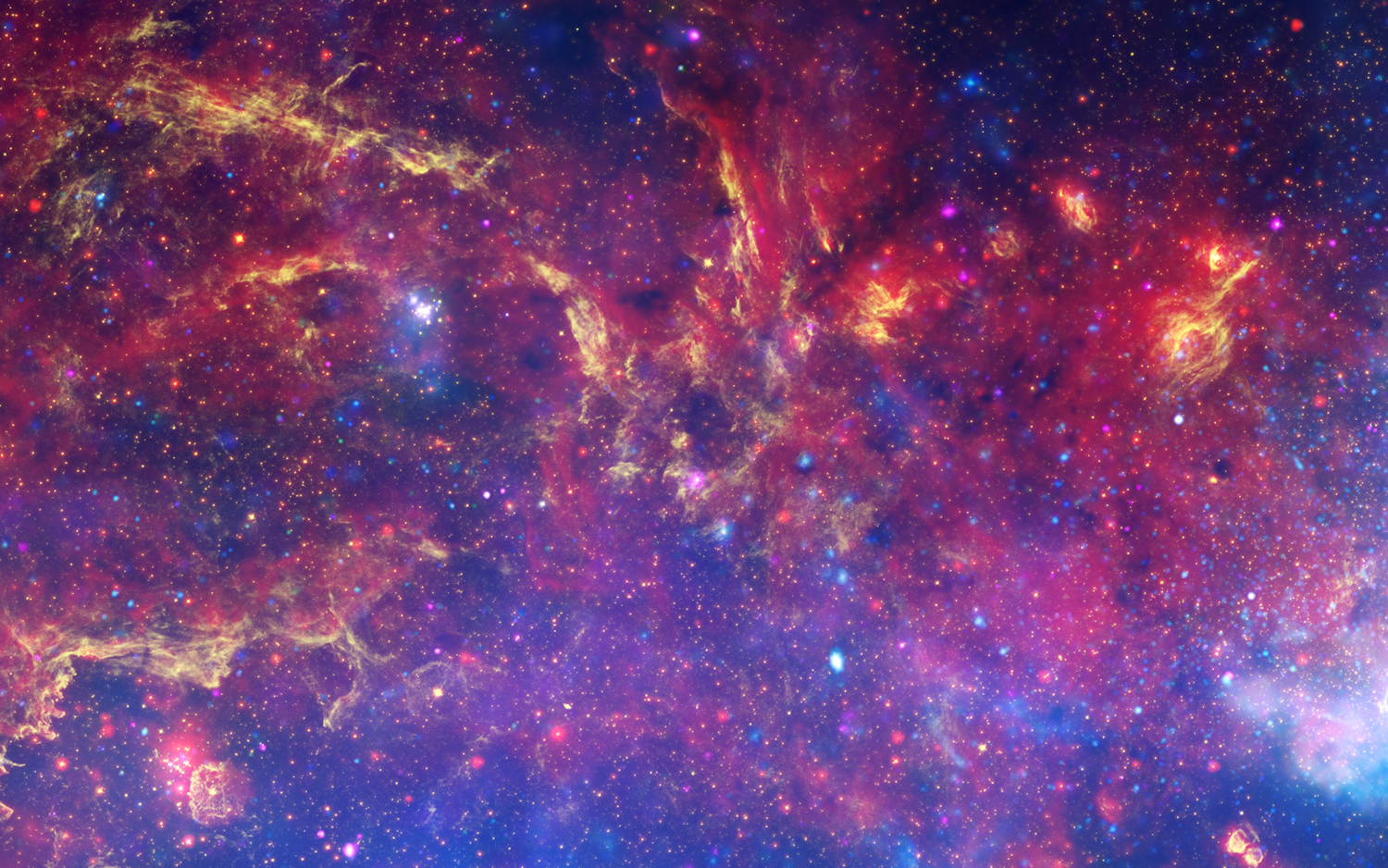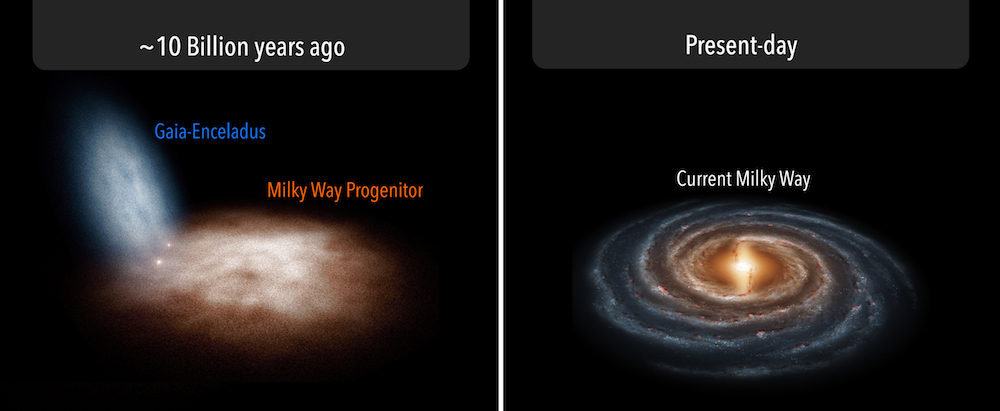The Milky Way Was an Adorable Cannibal, Cosmic 'Baby Picture' Reveals

Ah, babies. One day they're crawling about, just an innocent mass of gas and cosmic fuzz. The next they're standing on their own … swallowing another baby whole.
They grow up so fast.
That's the gist of a new cosmic "baby picture" of the Milky Way galaxy, which reveals its humble origins, before it cannibalized another, smaller galaxy.
Approximately 10 billion years ago, a collision between two galaxies ended with one of them — a dwarf galaxy named Gaia-Enceladus — absorbed by the other, which was more than three times its size. Over millions of years, the massive cannibal absorbed its galactic meal to become the Milky Way as it is today: the spiral galaxy that we call home, and host to at least 100 billion stars.
Past work showed that the Milky Way merged with another galaxy, but scientists debated the timeline of the collision and aftermath. Recently, researchers estimated when the merger happened by mapping about 1 million stars from the galaxy's disk and inner halo — all within 6,500 light-years from the sun — using data from Gaia, a space telescope launched in 2013 by the European Space Agency (ESA).
This new data helped the researchers distinguish between stars that formed in the Milky Way prior to the collision and hinted at what happened after the two galaxies collided. [11 Fascinating Facts About Our Milky Way Galaxy]
Other distant galaxies bear clues about mergers that happened billions of years ago, visible as distortions in a galaxy's overall shape. But it's hard to see that in the Milky Way because we're inside it, said lead study author Carme Gallart, a research scientist with the Institute of Astrophysics of the Canary Islands.
Get the world’s most fascinating discoveries delivered straight to your inbox.
Detecting the Milky Way's long-ago merger meant tracking how different groups of stars moved relative to each other and then examining the differences in the groups' chemical makeup, Gallart told Live Science in an email.
To figure out stars' ages, astrophysicists measure properties such as color and brightness, using computer simulations to map them to different star evolution stages. But calculating a star's brightness depends on how far away it is, "and measuring distances is complicated," Gallart said.
However, the Gaia mission is changing that. The space telescope has accurately measured distances "for millions of stars within thousands of light-years around the sun," Gallart explained. "This has allowed us to determine the distribution of ages for these stars, for a large volume around the sun and with unprecedented accuracy."
In the study, researchers identified two types of Milky Way stars; a "red" group, which contained a higher concentration of metals, and a "blue" group, which wasn't as metal rich. They determined that the blue group originally belonged to Gaia-Enceladus, the smaller galaxy that was swallowed up.
In the beginning
The scientists found that both galaxies emerged around 13 billion years ago and then produced stars for about 3 billion years before they collided — a process that took millions of years.
As the galaxies merged, the collision heated up existing stars in the young Milky Way, drawing them into a stellar halo — a spherical zone surrounding the galaxy. Gas fell toward the galaxy's center to create a shape like a disk, "with the thick disk continuing to form stars at a substantial rate," Gellart said. Then, around 6 to 8 billion years ago, "the gas settled into a thin disk that has continued to form stars until the present day," she said.
The sequence of events that fed the formation of the main disk in the Milky Way uncovered important clues about what happens when two galaxies crash into each other, Gallart explained.
"We can measure these effects much more accurately in the Milky Way than in external galaxies, and this will provide many new insights on the physical mechanisms that play a role in the evolution of galaxies," she said.
The findings were published online today (July 22) in the journal Nature Astronomy.
- Spaced Out! 101 Astronomy Images That Will Blow Your Mind
- Stunning Photos of Our Milky Way Galaxy (Gallery)
- 8 Galaxies With Unusual Names
Originally published on Live Science.

Mindy Weisberger is a science journalist and author of "Rise of the Zombie Bugs: The Surprising Science of Parasitic Mind-Control" (Hopkins Press). She formerly edited for Scholastic and was a channel editor and senior writer for Live Science. She has reported on general science, covering climate change, paleontology, biology and space. Mindy studied film at Columbia University; prior to LS, she produced, wrote and directed media for the American Museum of Natural History in NYC. Her videos about dinosaurs, astrophysics, biodiversity and evolution appear in museums and science centers worldwide, earning awards such as the CINE Golden Eagle and the Communicator Award of Excellence. Her writing has also appeared in Scientific American, The Washington Post, How It Works Magazine and CNN.



